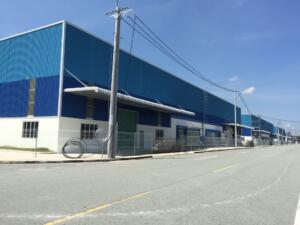
Sign up for our newsletters
The best of Business news, in your inbox.
Today, I would like to provide guidance on the methods and precautions for selecting industrial parks when Japanese manufacturers expand into Vietnam.
Conducting site visits is the most effective way to obtain information on industrial parks in Vietnam. Site visits are also indispensable in making the final decision. While some industrial parks may provide transportation, it is advisable to arrange a rental car with a driver if that is not the case. There are several things that must be confirmed during the site visit, and I would like to present the key checkpoints to consider.

I would like to list the checkpoints to be discussed during the meeting with the industrial park representatives during the site inspection:


First, it is necessary to obtain information on nearly 500 industrial parks in Vietnam in advance in Japan, and confirm the location, land, rental factories/warehouses, vacant lots, price ranges, and contract terms. From this perspective, it is advisable to obtain basic information from websites like PIVASIA before conducting an on-site inspection, narrow down the industrial parks that match your company’s preferred conditions, and then actually visit the site and select a reliable industrial park. However, it is not easy to identify this with just 1-2 visits. Therefore, it is wise to consult with experienced consulting firms or accounting firms that provide support for market entry. PIVASIA also provides market entry support services, including arranging site visits, so it is advisable to inquire by email.
(Email: [email protected])

Business Advisor
G.A. Consultants Vietnam Co., Ltd
After graduating from university, he joined a PHP research institute and served as the head of the New York office. He then worked on the “Nagoya Port Redevelopment Project” at a subsidiary of the Chubu Nippon Broadcasting (CBC) company. He later shifted his base to Asia, where he was involved in the launch of “FM96.3” in Singapore, and the creation of “Hello Vietnam” and “Invest Asia” magazines in Vietnam. He then joined BW Industrial Development JSC, Vietnam’s largest rental factory development company, where he was responsible for attracting Japanese manufacturing companies. Currently, he is active as a consultant for the entry of Japanese companies at “G.A. Consultants”, one of the longest-standing Japanese HR consulting firms in Vietnam.
The best of Business news, in your inbox.